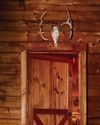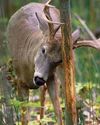High-velocity shells drop more ducks and geese, right? Not so fast…

WHILE I’D NEVER DRUNK deeply of the high-velocity shot shell Kool-Aid, I had sipped enough over the years to be concerned when I saw the ammo selection for our three-day Saskatchewan waterfowl hunt. We could shoot anything we wanted, so long as it was 1 3/8-ounce Rio steel loads at 1,300 fps. How would we kill anything with pellets so slow? We might as well throw marshmallows.
Those shells dropped everything. Big ducks, little ducks, geese, and cranes fell to our dawdling pellets. I kept on shooting slow steel throughout seasons at home and had no problems at all, even with fat, 12-pound giant Canadas in the bitter cold.
We’ve all been told that speed kills when it comes to shotgun loads. The idea has been sold to us for decades that velocity is the best way to make steel shot more effective on ducks and geese. I always thought “fast enough” meant north of 1,450 fps. Now I wonder. In an effort to come up with some concrete answers about shot velocity, I joined Federal’s engineers in shooting various steel loads at gelatin blocks last spring, and I pored over data generated by the late Ed Lowry’s shotgun ballistics program. Spoiler alert: Speed does kill. But slower, bigger pellets are just as effective, and in ballistics, there is no such thing as a free lunch. When you blast pellets downrange faster, there are trade-offs you have to consider.
Here are my top four lessons learned, some of which may seem contradictory, but that’s because there’s more than one way to skin a goose.
LESSON NO. 1: SPEED KILLS, BUT SO DOES BIGGER SHOT
This story is from the August - September 2018 edition of Field & Stream.
Start your 7-day Magzter GOLD free trial to access thousands of curated premium stories, and 9,000+ magazines and newspapers.
Already a subscriber ? Sign In
This story is from the August - September 2018 edition of Field & Stream.
Start your 7-day Magzter GOLD free trial to access thousands of curated premium stories, and 9,000+ magazines and newspapers.
Already a subscriber? Sign In
LIVING THE DREAM
After the author arrives in Maine’s fabled North Woods with a moose tag in his pocket, an adventure he’s been wanting to take his entire hunting life, reality sets in, and he learns a valuable lesson: Be careful what you wish for
Get the Drift
How to make an accurate windage call under pressure

First Sit
An icebreaker outing in a pristine spot produces the rut hunt of a lifetime
A Local Haunt
The author finds a sense of place in an overlooked creek, close to home

A Hop and a Pump
Jump-shooting rabbits with classic upland guns is about as good a time as you can have in the outdoors

Welcome TO camp
Is there any place better than a good hunting camp? It has everything: great food, games and pranks, and of course, hunting. Shoot, we don’t even mind going to camp for grueling work days in the summer. Here, our contributors share their favorite stories, traditions, and lessons learned from camps they’ve shared. So come on in and join us. The door’s open.
THE DEERSLAYERS
Before you even claim a bunk, you need to eyeball the hardware your buddies have brought. In the process, you’ll see that the guns at deer camp are changing. What was walnut and blued steel may now be Kevlar and carbon fiber. The 10 rifles featured here aren’t your father’s deer guns. They’re today’s new camp classics
THE JOURNEY TO PIKE'S PEAK
Last summer, the author and three friends ventured off the grid to a remote fish camp in Canada. They hoped for great fishing, but what they experienced was truly something else

Stage Directions
When early-season whitetails vanish from open feeding areas, follow this woods-edge ambush plan
Rookie Season
A pup’s first year, from preseason training to fall’s big show